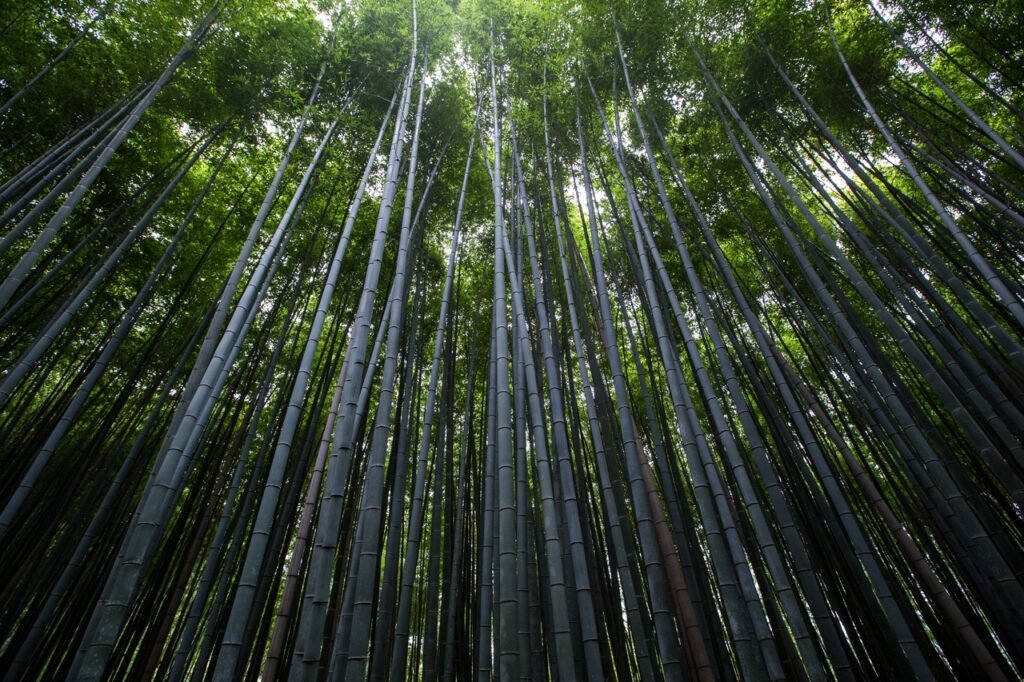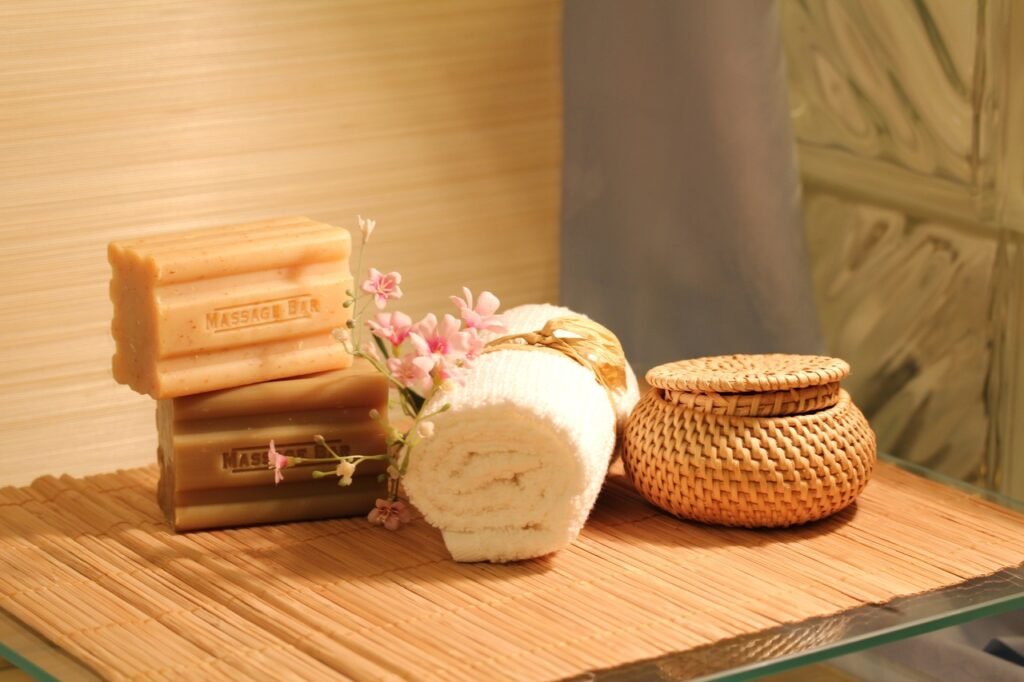Does Bamboo Absorb Water? Exploring The Properties Of This Sustainable Material
0Shares
Does bamboo absorb water is among the most common questions asked regarding this popular sustainable material. You may have been planning to use bamboo for your next project, yet you’re unsure if the material can handle moisture. Fortunately, understanding bamboo properties will help you decide whether to use this amazing natural resource for your business.
Bamboo is a popular choice for many projects and home decor items because it offers excellent durability, longevity, and sustainability while being aesthetically pleasing. But does bamboo soak up water? In this article, we’ll explore the properties of bamboo to help you decide if this natural material is suitable for your project and ventures.
Exploring the Unique Properties of Bamboo: Does Bamboo Absorb Water or Repell it?

Like any other plant, bamboo is composed mainly of cellulose. It means that it will absorb a certain amount of water, but the rate at which it absorbs moisture depends on several factors, which include:
🌿Type of Bamboo
The type of bamboo is the first factor to consider when it comes to understanding its properties. There are two main types of bamboo: culms and shoots. Culms, or the mature stalks that grow from the roots, are known for their rigidness and high resistance to moisture. It makes them ideal for outdoor use as they will not warp or crack even in water.
On the other hand, bamboo shoots are young bamboo plants that have yet to reach full maturity. These are softer and more malleable than culms, but they will absorb more moisture because of their delicate composition. It makes them suitable for indoor use with less moisture exposure.
🌿Bamboo Texture
Bamboo is a fibrous plant that is composed of cellulose and hemicellulose. These materials are what make bamboo strong, flexible, and water-resistant. The texture of bamboo is also unique. Under a microscope, it has a series of tiny ridges and grooves that help to repel water. This texture can create water-resistant products such as umbrellas and raincoats.
However, this does not mean that bamboo repels water completely. When bamboo fibers are exposed to water, they can absorb a certain amount of moisture. The absorption rate varies depending on the density and thickness of the bamboo. For example, thinner bamboo poles will absorb more water than thicker poles. The inner layer of bamboo between the outer wall and the hollow center is denser and less porous than the other layers, absorbing less water.
🌿Ability to Regulate Moisture
Another unique property of bamboo is its ability to regulate moisture. Bamboo can naturally absorb and release moisture depending on the environment. Thus, bamboo will absorb moisture during humid conditions and release it during dry conditions. This makes bamboo ideal for products used in different environments, such as furniture and flooring.
Bamboo is often used in construction, particularly in tropical regions. In these areas, bamboo is exposed to high temperatures and humidity. The treatment process involves boiling or steaming the bamboo poles, which not only helps to eliminate pests but also increases the bamboo’s resistance to moisture.
Thus, while bamboo can repel water to a certain extent, it is not completely water-resistant. Some types of bamboo will absorb more water than others, which depends on the bamboo’s thickness and density. Despite its ability to absorb water, bamboo is still water-resistant due to its natural structure.
Potential Negative Effects of Bamboo in Wet Conditions

It is important to note that bamboo is not completely waterproof, and even when treated, it can be damaged by exposure to water over a period of time. Below are the negative effects of bamboo in wet conditions:
❗Rotting
One of the potential adverse effects of bamboo in wet conditions is rotting. When exposed to moisture, lucky bamboo can rot over time and become weak and brittle. The rotting process is further accelerated when organisms, such as bacteria or fungi, are present in the water. Therefore, ensuring your bamboo product is made from treated bamboo to prevent rotting and deterioration over time is essential.
❗Warping
Another common issue with bamboo exposed to water is warping. Bamboo fibers absorb moisture and can expand and cause the material to warp or bend. This is more common in thinner pieces of bamboo that need to be treated properly. You can prevent warping by using thicker pieces of bamboo that are treated to resist moisture.
❗Staining
Another potential issue with bamboo in wet conditions is staining. Bamboo can absorb water, which can cause it to become discolored or stained over time. It is more common when using untreated lucky bamboo, and you can prevent it by using treated bamboo that has been boiled or steamed to increase its resistance to moisture.
❗Mold Growth
When bamboo is exposed to water for a long period, mold and mildew can grow on the surface. This growth will cause staining and discoloration, which can be difficult to remove. Therefore, it is important to ensure that your bamboo product is treated properly so it does not become susceptible to mold growth in wet conditions.
❗Damage to Internal Structures
Finally, when bamboo is exposed to water for a long period, the internal structures can become damaged. It is because the inner layers of bamboo are more porous than the outer layers and can be affected by moisture more easily. In order to prevent this damage from occurring, it is essential to use adequately treated bamboo that has been boiled or steamed to increase its resistance to moisture.
Overall, bamboo plant is a water-resistant material due to its natural structure and texture. However, it is not completely waterproof and can be affected by water over time. It is vital to ensure that your bamboo product is made from properly treated material to withstand wet conditions and maintain its structural integrity.
Practical Uses or Applications of Bamboo’s Water Absorption Ability in Everyday Life

This incredible plant can absorb up to three times its weight in water, making it an incredibly versatile material for everyday use! Here are some boo’s water absorption abilities that can help you daily.
✅Bamboo Towels – Replace your Paper Towels with a Sustainable Alternative
Creating bamboo towels is one of the most practical uses of bamboo’s water absorption ability. These towels are not only eco-friendly but also highly absorbent. Since bamboo can absorb moisture so efficiently, bamboo towels can soak up spills and splatters without leaving any residue behind. Plus, they’re soft and gentle on your skin, making them perfect for daily use.
✅Bamboo Clothing – Sustainable and Comfortable Clothing
Another fantastic use of bamboo’s water absorption ability that you might not have thought of is the creation of clothing. Bamboo fabrics are incredibly soft and comfortable but offer moisture-wicking properties, absorbing sweat and moisture away from your skin. This makes them perfect for athletic clothing, loungewear, or everyday wear. Plus, since bamboo is a highly sustainable crop that requires little water and grows rapidly, it’s an excellent choice for eco-conscious clothing consumers.
✅Bamboo Diapers – Safer, Healthier Diapering Option for Babies
If you’re a parent, you know that finding a diaper that’s both absorbent and gentle on your baby’s skin can be challenging. Bamboo diapers offer an excellent solution, as they are highly absorbent while remaining soft and safe against your baby’s delicate skin. Plus, since bamboo is naturally antibacterial and hypoallergenic, it’s less likely to cause irritation or rashes than traditional diapers made of synthetic materials.
✅Bamboo Cutting Boards – Durable + Safe to Use
Finally, bamboo’s water absorption ability can also be incredibly useful in the kitchen. Bamboo cutting boards are naturally antimicrobial and won’t absorb harmful bacteria like traditional wood cutting boards. Plus, since bamboo absorbs moisture so well, it’s less likely to develop warping or cracks. Investing in a high-quality bamboo cutting board is a sustainable and effective way to keep your kitchen clean and safe.
These are just a few of the many practical uses of bamboo’s amazing water absorption ability. Whether you’re looking for sustainable clothing, towels, or kitchenware, there are various ways in which bamboo can help make your life easier and more eco-friendly.
Learning How to Care for Bamboo in High-Humidity Areas for Long-Term Use
In high-humidity areas, like tropical regions, special care must be taken when caring for bamboo. Here’s how you do it:
👉Maintaining and Protecting Bamboo
The first step in caring for bamboo in high-humidity areas is maintaining and protecting it. You can do this by cleaning the surface regularly with a dry cloth or brush. Sealing the bamboo with a water-resistant finish such as varnish or lacquer is also essential. This will help protect the surface from moisture and make cleaning easier.
👉Proper Storage of Bamboo
In addition, it is important to store bamboo in high-humidity areas properly. Bamboo should be stored in a dry area away from direct sunlight and heat. If possible, keep the bamboo elevated off the ground so that moisture does not accumulate underneath it.
👉Controlling the Temperature
It is also essential to control the temperature in high-humidity areas. Try to maintain a cool and comfortable temperature. It will prevent humidity from accumulating on the surface of the bamboo and causing warping or other damage.
👉Regulating Moisture Levels
It’s important to regulate the moisture levels in high-humidity areas. This can be done using a dehumidifier or regularly airing out the area. It will help maintain optimal humidity levels and prevent damage to bamboo products.
👉Investigating for Pests
When caring for bamboo in high-humidity areas, checking for pests or insects that may have infested the area is vital. If there are signs of an infestation, it is important to take action immediately and treat the area with insecticides.
By following these tips on caring for bamboo in high-humidity areas, you can ensure that your bamboo products maintain their structural integrity and last for years.
Frequently Asked Questions
How much water can bamboo absorb?
Bamboo is a highly absorbent material, and it can take up to 30% of its weight in water. It means that if a bamboo board weighs one pound, it can absorb up to 0.3 pounds of water. That’s a lot! It’s one of the reasons why bamboo is such a popular choice for cutting boards because it can help prevent bacterial growth by absorbing excess moisture.
Are there any limitations to bamboo’s water absorption capacity?
Like any other material, bamboo has its limitations. While it’s excellent at absorbing water, it can only hold so much before it becomes saturated. At this point, it won’t be able to absorb any more water and may even start to degrade and rot. In order to prevent this from happening, it’s crucial to keep bamboo dry and not expose it to excessive moisture.
Can bamboo absorb water vapor from the air?
Yes, bamboo can absorb water vapor from the air. It can naturally regulate moisture and maintain a comfortable humidity level. It is ideal for use in areas with high humidity, such as bathrooms and kitchens.
Can bamboo absorb and release water repeatedly without losing its effectiveness?
Bamboo can absorb and release water repeatedly without losing its effectiveness. It means that as long as it’s not saturated with water, it will continue to absorb and release moisture as needed. This is another reason why it’s a great material for humid environments.
Final Words
After conducting thorough research on the question, “does bamboo absorb water,” I have realized that bamboo is indeed a highly absorbent plant. As someone who is always looking for ways to reduce my ecological footprint, knowing that bamboo is not only eco-friendly but also incredibly useful is a personal realization that has left me feeling inspired and motivated to explore the many benefits of this versatile plant. The next time I need to make a purchase, I will definitely consider choosing a bamboo product, knowing that it is smart and sustainable for my lifestyle and the environment.
0Shares
